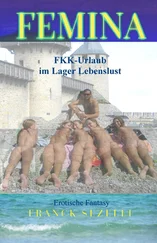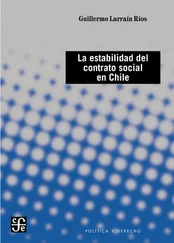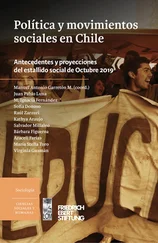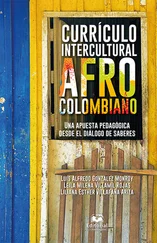Parrish JK, Hamner WM (1997). Animal groups in three dimensions . Cambridge University Press, Cambridge, Reino Unido.
Parrish JK, Edelstein-Keshet L (1999). Complexity, pattern, and evolutionary trade-offs in animal aggregation. Science 284:99-101.
Parrish JK, Viscido SV, Grunbaum D (2002). Self-organized fish schools: an examination of emergent properties. The Biological Bulletin 202:296-305.
Parsons KM, Durban JW, Claridge DE, Balcomb KC, Noble LR, Thompson PM (2003). Kinship as a basis for alliance formation between male bottlenose dolphins, Tursiops truncatus , in the Bahamas. Animal Behaviour 66:185-194.
Pearson OP (1948). Life history of mountain viscachas in Peru. Journal of Mammalogy 29:345-374.
Penna MV, Veloso AM (1981). Acoustical signals related to reproduction in the spinulosus species group of Bufo (Amphibia, Bufonidae). Canadian Journal of Zoology 59:54-60.
Penna M, Veloso A (1990). Vocal diversity in frogs of the South American temperate forest. Journal of Herpetology 24:23-33.
Pereira JA, Walker RS, Novaro AJ (2012). Effects of livestock on the feeding and spatial ecology of Geoffroy’s cat. Journal of Arid Environments 76:36-42.
Pérez-Matus A, Ferry-Graham LA, Cea A, Vásquez JA (2008). Community structure of temperate reef fishes in kelp-dominated subtidal habitats of northern Chile. Marine and Freshwater Research 58:1069-1085.
Pérez-Valdés M, Figueroa-Aguilera D, Rojas-Pérez C (2017). Ciclo reproductivo de la ascidia Pyura chilensis (Urochordata: Ascidiacea) procedente de líneas de cultivo de mitílidos. Revista de Biología Marina y Oceanografía 52:333-342.
Pernollet CA, Estades CF, Pavéz EF (2012). Estructura social del pato cortacorrientes Merganetta armata armata , en Chile central. Boletín Chileno de Ornitología 18:23-34.
Phillips RA, Furness RW, Stewart FM (1998). The influence of territory density on the vulnerability of Arctic skuas Stercorarius parasiticus to predation. Biological Conservation 86:21-31.
Pio MJ, Pastorino G, Herbert GS (2015). Trophon geversianus (Pallas, 1774): the first record of communal egg masses in the muricid subfamily Trophoninae (Gastropoda). The Nautilus 129:172-174.
Pitcher TJ, Magurran AE, Winfield IJ (1982). Fish in larger shoals find food faster. Behavioral Ecology and Sociobiology 10:149-151.
Pitcher TJ, Parrish JK (1993). Functions of shoaling behaviour in teleosts. Pp. 294-337, en: The behaviour of teleost fishes (Pitcher TJ, ed.). Chapman & Hall, Estados Unidos de América.
Pitman RL, Durban JW (2012). Cooperative hunting behavior, prey selectivity and prey handling by pack ice killer whales ( Orcinus orca ), type B, in Antarctic Peninsula waters. Marine Mammal Science 28:16-36.
Povilitis AJ (1983). Social organization and mating strategy of the huemul ( Hippocamelus bisulcus ). Journal of Mammalogy 64:156-158.
Povilitis A (1985). Social behavior of the huemul ( Hippocamelus bisulcus ) during the breeding season. Zeitschrift für Tierpsychologie 68:261-286.
Pretelli MG, Josens ML, Escalante AH (2012). Breeding biology at a mixed-species colony of great egret and cocoi heron in a pampas wetland of Argentina. Waterbirds 35:35-43.
Pruett-Jones SG, Lewis MJ (1990). Sex ratio and habitat limitation promote delayed dispersal in superb fairy-wrens. Nature 348:541-542.
Quirici V, Castro R, Oyarzún J, Ebensperger LA (2008). Female degus ( Octodon degus ) monitor their environment. Animal Cognition 11:441-448.
Quirici V, Palma M, Sobrero R, Faugeron S, Ebensperger LA (2013). Relatedness does not influence vigilance in a population of the social rodent Octodon degus . Acta Ethologica 16:1-8.
Rabenold PP (1987). Recruitment to food in black vultures: evidence for following from communal roosts. Animal Behaviour 35:1775-1785.
Raimilla V, Suazo CG, Robertson G, Rau JR (2014). Observations suggesting cooperative breeding by striated caracaras ( Phalcoboenus australis ). Journal of Raptor Research 48:189-191.
Randall JA, Rogovin K, Parker PG, Eimes JA (2005). Flexible social structure of a desert rodent, Rhombomys opimus : philopatry, kinship, and ecological constraints. Behavioral Ecology 16:961-973.
Rasa OAE (1986). Coordinated vigilance in dwarf mongoose family groups: the ‘Watchman’s song hypothesis and the costs of guarding. Ethology 71:340-344.
Reboreda JC, Fiorini VD, Tuero DT (2019). Behavioral ecology of Neotropical birds . Springer, Cham, Suiza.
Rehberg-Besler N, Doucet SM, Mennill DJ (2017). Overlapping vocalizations produce far-reaching choruses: a test of the signal enhancement hypothesis. Behavioral Ecology 28:494-499.
Reig OA (1970). Ecological notes on the fossorial octodont rodent Spalacopus cyanus (Molina). Journal of Mammalogy 51:592-601.
Reise D, Gallardo MH (1989). An extraordinary occurrence of the tunduco Aconaemys fuscus (Waterhouse, 1841) (Rodentia, Octodontidae) in the central valley, Chillán, Chile. Medio Ambiente 10:67-69.
Rey A, Carmanchahi PD, Puig S, Guichón ML (2009). Densidad, estructura social, actividad y manejo de guanacos silvestres ( Lama guanicoe ) en el sur del Neuquén, Argentina. Mastozoología Neotropical 16:389-401.
Reyes-Arriagada R, Hiriart-Bertrand L, Riquelme V, Simeone A, Pütz K, Lüthi B, Raya Rey A (2013). Population trends of a mixed-species colony of Humboldt and Magellanic penguins in southern Chile after establishing a protected area. Avian Conservation and Ecology 8:13.
Ribeiro S, Viddi FA, Freitas TR (2005). Behavioural responses of Chilean dolphins ( Cephalorhynchus eutropia ) to boats in Yaldad Bay, Southern Chile. Aquatic Mammals 31:234-242.
Riehl C, Strong MJ (2018). Stable social relationships between unrelated females increase individual fitness in a cooperative bird. Proceedings of the Royal Society B: Biological Sciences 285:20180130.
Ritz DA (1994). Social aggregation in pelagic invertebrates. Advances in Marine Biology 30:155-216.
Rivera DS, Abades S, Alfaro FD, Ebensperger LA (2014). Sociality of Octodontomys gliroides and other octodontid rodents reflect the influence of phylogeny. Journal of Mammalogy 95:968-980.
Roberts G, Evans PR (1993). A method for the detection of non-random associations among flocking birds and its application to sanderlings Calidris alba wintering in NE England. Behavioral Ecology and Sociobiology 32:349-354.
Robinson EJ, Barker JL (2017). Inter-group cooperation in humans and other animals. Biology Letters 13:20160793.
Rodríguez H, Mata A (2011). Zonación y comportamiento alimentario de aves limícolas migratorias en el Parque Nacional Laguna de La Restinga, estado Nueva Esparta, Venezuela. Memoria de la Sociedad de Ciencias Naturales La Salle 71:51-63.
Rodríguez SR, Ojeda FP (1998). Behavioral responses of the sea urchin Tetrapygus niger to predators and food. Marine and Freshwater Behaviour and Physiology 31:21-37.
Roe NA, Rees WE (1976). Preliminary observations of the taruca ( Hippocamelus antisensis : Cervidae) in southern Peru. Journal of Mammalogy 57:722-730.
Roig OA (1970). Ecological notes on the fossorial octodont rodent Spalacopus cyanus (Molina). Journal of Mammalogy 51:592-601.
Rojas JM, Fariña JM, Soto RE, Bozinovic F (2000). Variabilidad geográfica en la tolerancia térmica y economía hídrica del gastrópodo intermareal Nodilittorina peruviana (Gastropoda: Littorinidae, Lamarck, 1822). Revista Chilena de Historia Natural 73:543-552.
Читать дальше












